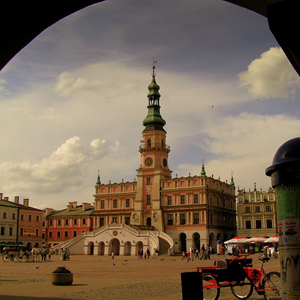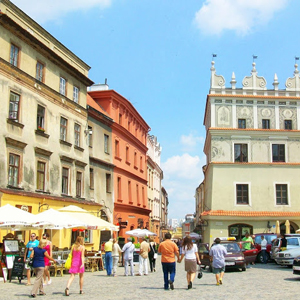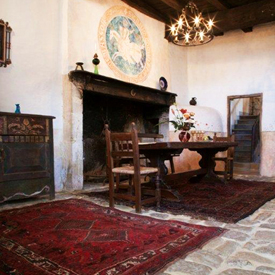
Białystok train station PHOTO: Eric Bednarski
Dating back to the 15th century, Bialystok owes much to the powerful Polish nobleman Count Branicki who dramatically re-designed and built up much of it in the early to mid-18th century. The city was among the most multicultural in all of Poland – home to Polish Catholics, Muslim Tatars, Orthodox Byelorussians and a Jewish community that had grown to some 50% to 60% of the population in the years before the Holocaust.
Białystok has given the world such personalities as Ludwik Zamenhof, the inventor of Esperanto, Dziga Vertov, the pioneering Soviet filmmaker, and Ryszard Kaczorowski, the last Polish President-in-Exile whose life was claimed by the plane crash at Smolensk earlier this year. However the Second World War, the grim years of the People’s Republic of Poland and the complications of transition meant that the city was stripped of the creativity, dynamism and diversity that had defined it for so long. Though still known for its breweries and vodka distilleries (the region is home to everyone’s favourite vodka, Żubrówka), the booming textile industry of the 19th century is a distant memory.
Białystok is therefore, for many, a byword for the backwardness and poverty of Eastern Poland. Announcing our intention of going somewhere that few in Poland ever considered a tourist destination, the bewildered reaction of our friends in Warsaw only served to convince us that this was a place where we were sure to find danger and adventure.
To our disappointment, rather than being transported into a nightmarish vision of the ‘Wild East’, as we had been led to expect, we found ourselves in a town which was, if not buzzing, strikingly pleasant. The city is a mixture of pre-War, communist era, and post-communist architecture and, though badly damaged during the Second World War, the streets of old Białystok are charming. By the 18th century town hall is the recently renovated main square filled with cafes, pubs and restaurants that although sparsely populated during the day, spring to life in the evening.
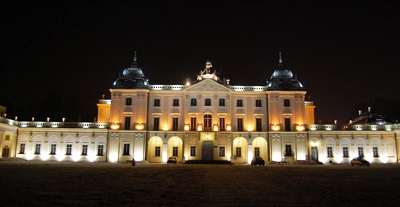
Branicki Palace, from dolinalangi.pl
Białystok’s most impressive building is the 18th century Baroque Branicki Palace -‘the Versailles of the Podlaskie region’ – which, like so much of the city, is undergoing a major renovation. The palace, being refurbished with the help of EU funding, hosts the city’s prestigious medical university, attended by a significant number of foreign students.
We got a moving sense of the city’s diverse past when we visited the Sienny Market in a former Jewish district which today is surrounded by empty plots, a scattering of ugly modern buildings and a handful of pre-War structures. Not far from the reconstructed Piaskower synagogue, in which the Białystok Association of Esperantists is now based, we walked past dilapidated old wooden houses seemingly haunted by the city’s Jewish past. The Białystok that was once known as the “Jerusalem of the North” has all but vanished.
So Białystok may come with an awful reputation, but it makes for a much nicer day-trip than Katowice. Granted, you don’t get much of an insight into what a place is really like by visiting it on a warm summer’s day. Industrial decline, poverty and unemployment are all problems that blight the region and which we could never get a proper sense of during a 24-hour visit.
The truth is that we couldn’t think of much to say about Bialystok other than we found it to be a thoroughly pleasant, if a little sleepy, provincial town. But a pleasant visit to a sleepy town is not of much interest to anyone, and as the day went on we started to panic: what on earth could we write that you wouldn’t find out by looking up Bialystok’s tourist information website (which is excellent).
As we discussed our impressions of the town, and how it had defied the expectations of both ourselves and all of our Polish friends who were incredulous that we were there, it became apparent that attitudes towards Bialystok were much more interesting than the town itself.
We had already noticed the parallels between our reactions to Bialystok and those of our friends from Britain and Canada who had visited Poland for the first time. Just like us, they had expected something much grimmer, much more dangerous, and much poorer than what they saw. Just as our friends had expected Warsaw to be rows of grey blocks and were pleasantly surprised by Krakowskie Przedmiescie and the Old Town, so we were pleasantly surprised by the centre of Białystok and the Branicki Palace.
We also noticed that the reaction from people in Białystok to our visit was also extremely similar to that of people in Warsaw who are curious as to why we had chosen to live there. Many in Warsaw simply refuse to believe that our choosing to move to Warsaw was done of our own free will. Similarly, we were constantly asked in Białystok for the real reason why we were there – “We’re just here for a daytrip and to look around” was not considered a satisfactory answer.
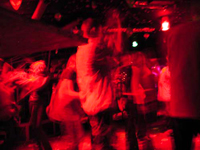
Metro Club, from okupe.org
A notable difference between attitudes towards us in Warsaw and Białystok was that whereas speaking in English provokes no reaction whatsoever in Warsaw, in Białystok, we were considered a genuine novelty. One club that we went to in the evening turfed out a group of locals from the best table and insisted, despite our protests, that we sit in their place. The ousted group was more than willing to oblige.
Białystok can in many ways be considered a very fitting analogy for Poland as a whole. Its old dynamism and diversity shattered by war and oppression, its impressive recovery and progress is still not getting the credit it deserves – changing the old prejudices of people to the West, and the lack of self-confidence of its own citizens is a slow but ongoing and visible process. We may not have been wowed as a first-time visitor from North America or Western Europe to Warsaw or Krakow may be, but we were nevertheless struck by a sense of a place trying to shake off the sadness of its recent past and look forward to a future of dull but blissfully peaceful progress.
CR
